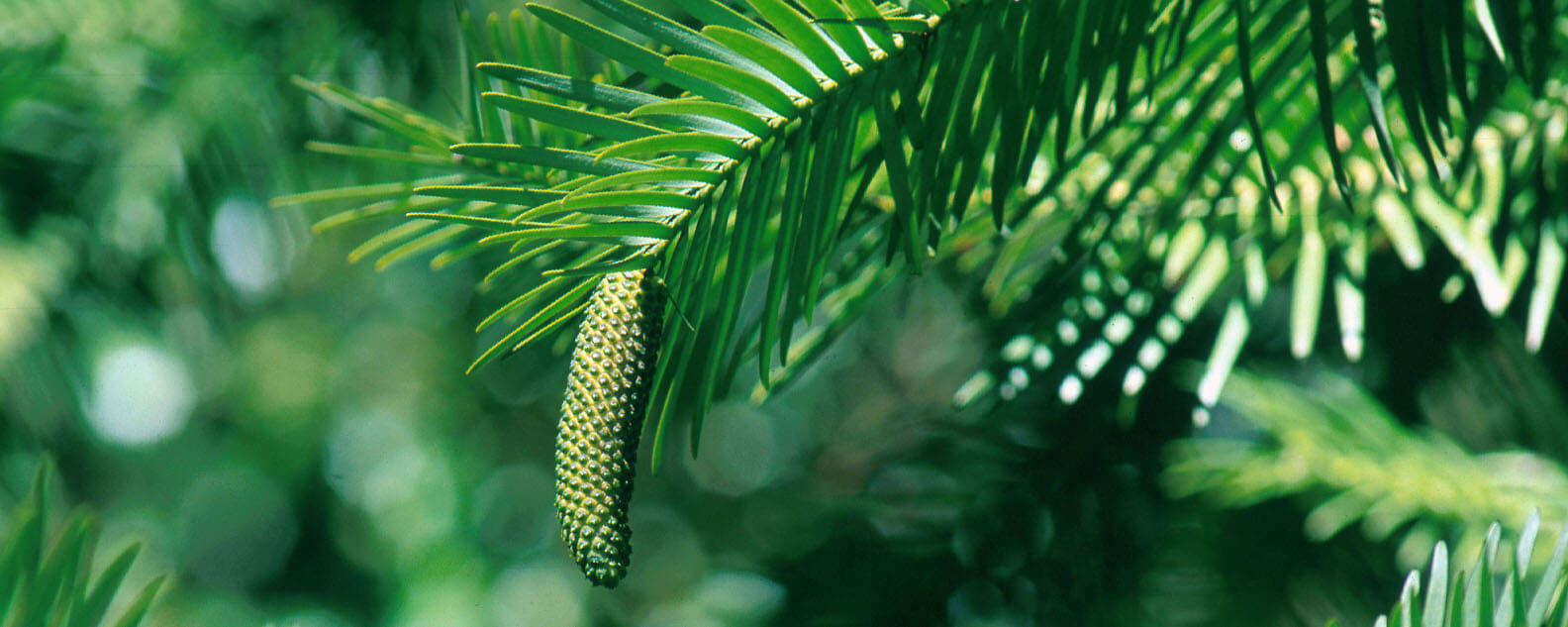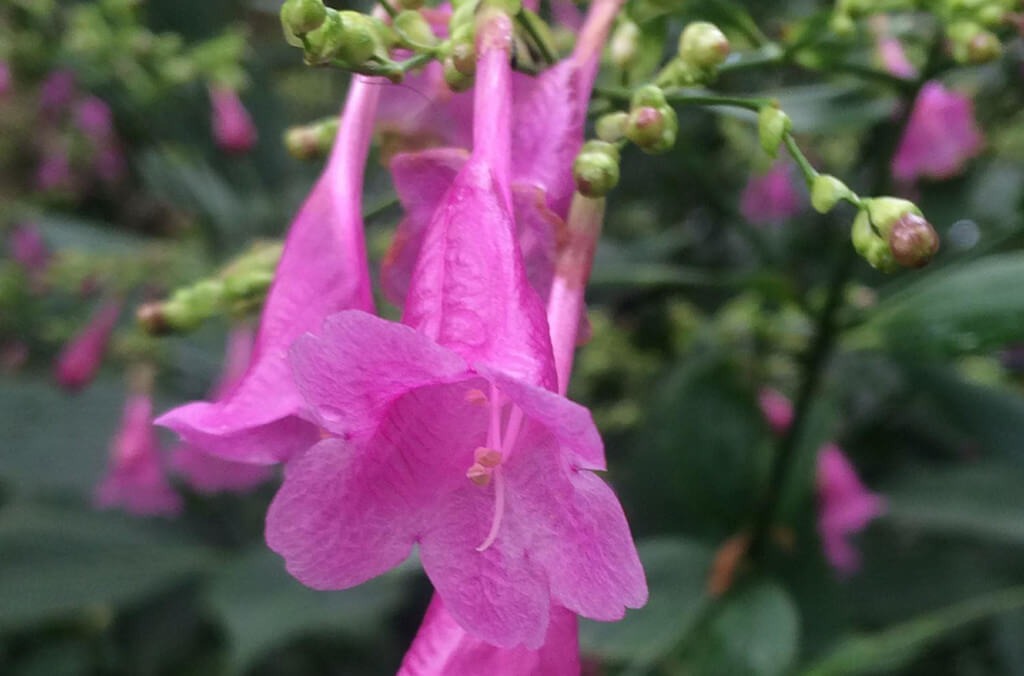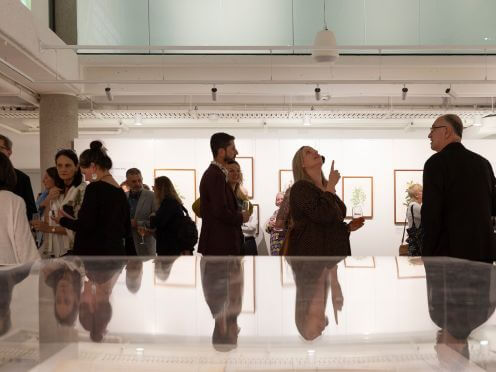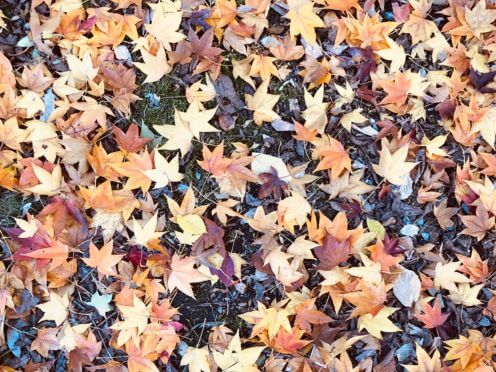Rare and resilient plants headline this month’s must-see tour
This month's tour features rare and resilient plants that have survived for millennia.

1. Ribbonwood
Idiospermum australiense
Endemic to the humid wet tropics of north-east Queensland the Ribbonwood tree originally described in 1902 was thought to be extinct until 1971 when the mysterious death of cows lead to the tree's re-discovery. An autopsy revealed the cows had died from eating the toxic fruit of trees growing nearby. It's interesting spirally arranged flowers change colour from cream to pink to rose red with age.
Family: Calycanthaceae
2. Camellia amplexicaulis
This species is extinct in the wild but cultivated in gardens in north Vietnam where the plant originates. It is very different to the commonly cultivated garden Camellias. It has magnificent, large, glossy green leaves and superb crimson new growth. The base of each leaf wraps around the stem and it is here that the flowers emerge as pink ball-shaped buds before opening to display a unique cup-shaped pink flower.
Family: Theaceae
3. Maidenhair Tree
Ginkgo biloba
Ginkgo biloba, sometimes referred to as a ‘living fossil’, is the only surviving member of an ancient order of seed-bearing plants existing around 270 million years ago (Ginkgoales). Individual trees are either female or male and we have both types in the Garden. Prized for their autumn colour, the trees’ distinctive fan-shaped, bilobed leaves turn a buttery yellow colour. Ginkgoes are also valued for their medicinal properties and edible seeds produced in summer.
Family: Ginkgoaceae
4.Wollemi Pine
Wollemia nobilis
This year marks thirty years since the discovery of this critically endangered tree by NSW National Parks Ranger David Noble, in remote gorges of the Blue Mountains World Heritage Area, 1.5 hours from Sydney. Less than 50 adult trees remain in the wild but meta-collections of planted trees representing the genetic diversity of the species are being established around the world, and in translocation projects in natural areas of the Blue Mountains in habitats resembling that of the wild population.
Family: Araucariaceae
5. Pink Strobilanthes
Strobilanthes cusia
Also known as Assam Indigo or Chinese Rain Bell, this perennial shrub is not only attractive, with its pendulous soft pink autumn flowers, but very useful. Historically it has been cultivated on a large scale in India and China as a source of indigo dye and is still the main source of blue dye for ethnic minorities in east and south-east Asia. It has also been used in traditional Chinese medicine for
nearly 2,000 years. Plants can be purchased at our Growing Friends Nursery.
Family: Acanthaceae

6. Lush Araucaria
Araucaria luxurians
This conifer is one of thirteen species of Araucaria endemic to New Caledonia. It occurs in small populations, on the main island Grande Terre, both near the sea and in rocky inland ravines. It might look similar to the Norfolk Island pine but gently touch the leaves and you will feel the difference and understand both its species epithet and common name. Male and female cones are produced on the same tree, but currently only male cones (pictured) can be seen at the end of branches.
Family: Araucariaceae
7. Dreadlock Palm or Rasta Palm
Burretiokentia hapala
This endangered palm from New Caledonia has been found in only three locations on the main island. It grows in dense humid forest at altitudes from 50 to 400 metres. The main threat to the species is a lack of seedlings, due to grazing and degradation of the forest by pigs and deer. The inflorescences are unusual as they are covered in a felt-like covering of soft fine hairs that brown with age. The species epithet derives from “hapalus” - soft to the touch.
Family: Arecaceae
8. Hong Kong Orchid Tree
Bauhinia x blakeana
This pink flowering tree was found in 1880 at Pokfulamin in Hong Kong by a French missionary who propagated it from a cutting. In 2005, scientists verified that it is a hybrid of two other Bauhinia species, B. variegata and B. purpurea. However, it is sterile. It does not produce fruit even when flowers are deliberately pollinated. New plants are only produced via vegetative propagation by people. This means all trees in the world are genetically identical to that first tree discovered in 1880.
Family: Fabaceae
Explore the Garden this month
Our guided walks are the perfect way to experience the very best of the Garden.

Botanical art is putting the impacts of climate change on plants in the spotlight following the opening of The Garden Gallery and new labs for the Research Centre for Ecosystem Resilience (ReCER) at the Royal Botanic Garden Sydney.
Tropical gems and temperate favourites feature on this month's tour.

With a dense collection of cool climate trees nestled in amongst UNESCO World Heritage wilderness, the Blue Mountains Botanic Garden Mount Tomah is one of the best places to marvel at nature’s spectacular show of autumn colour.